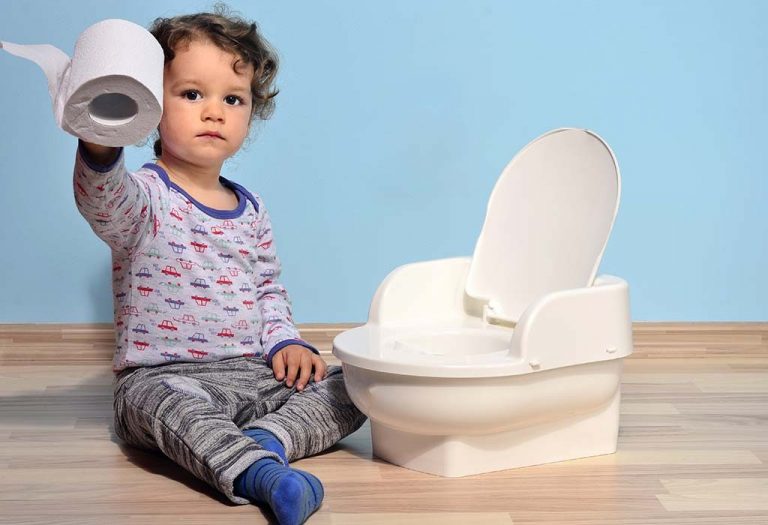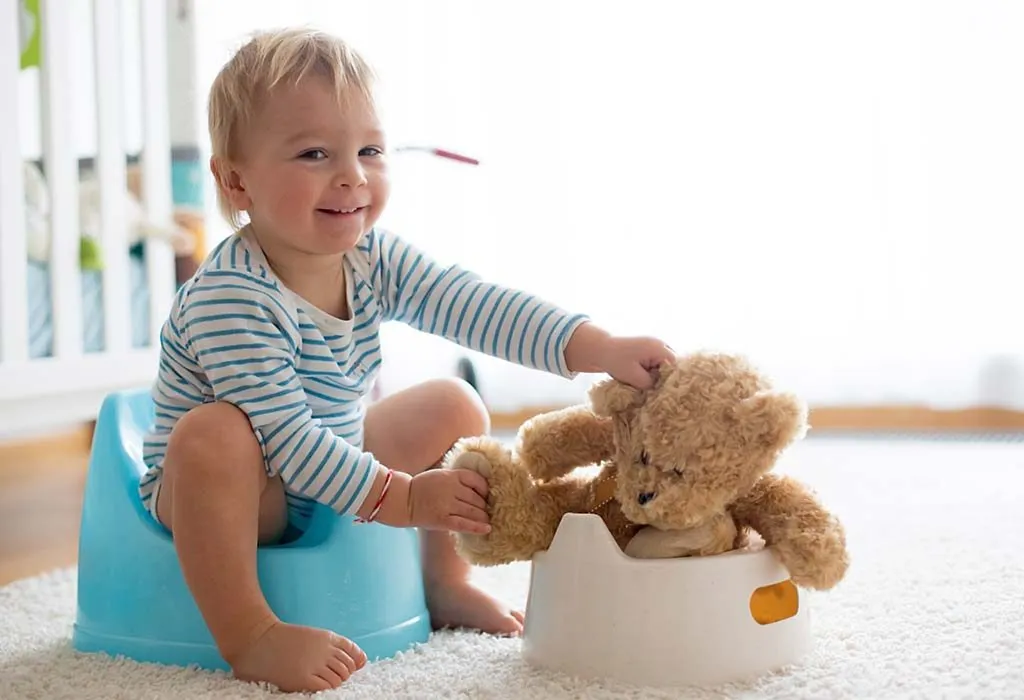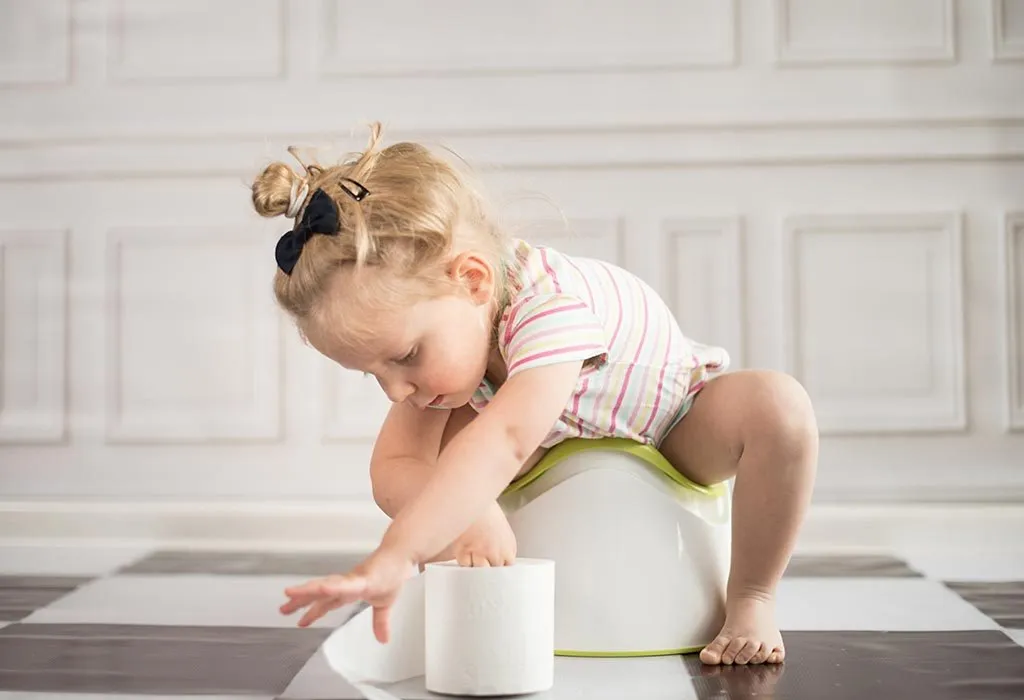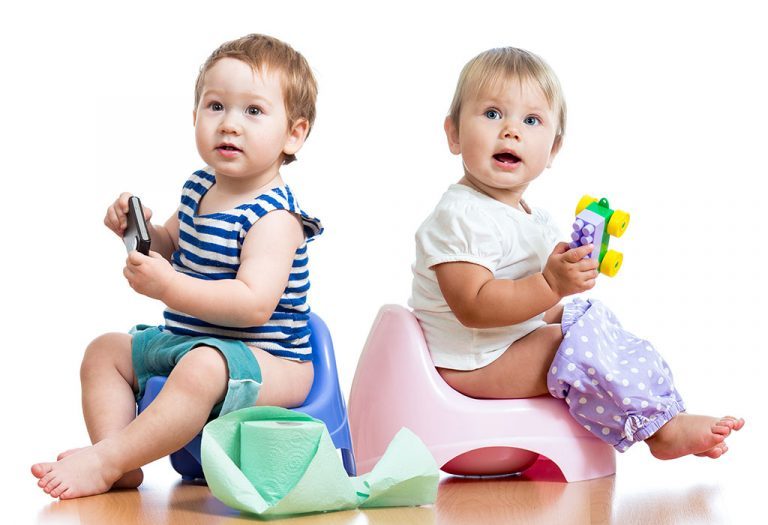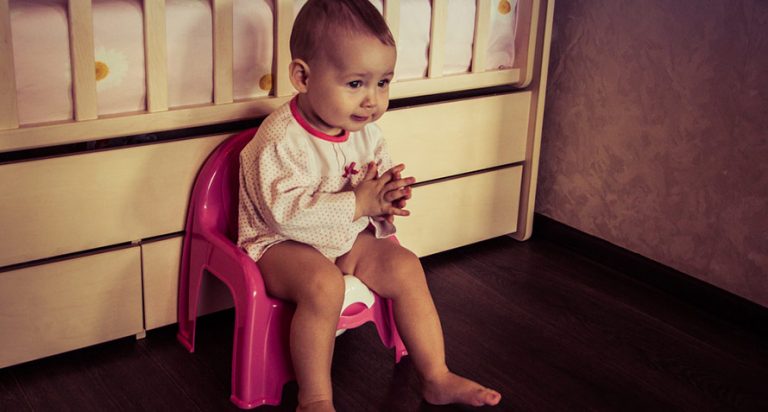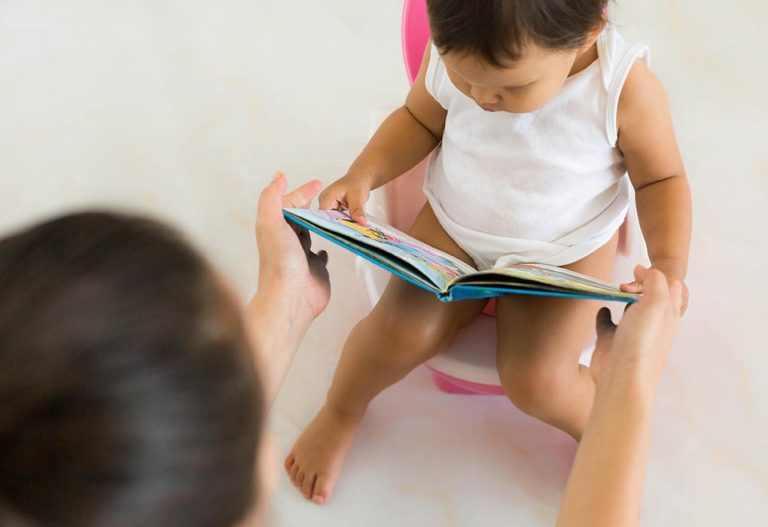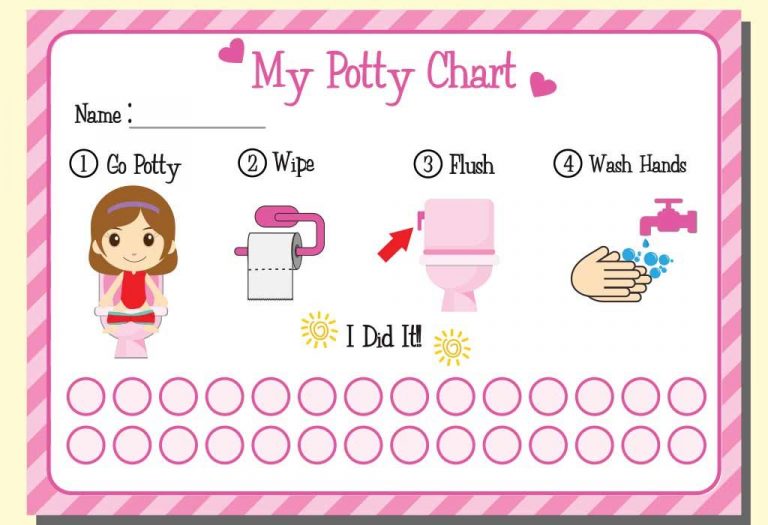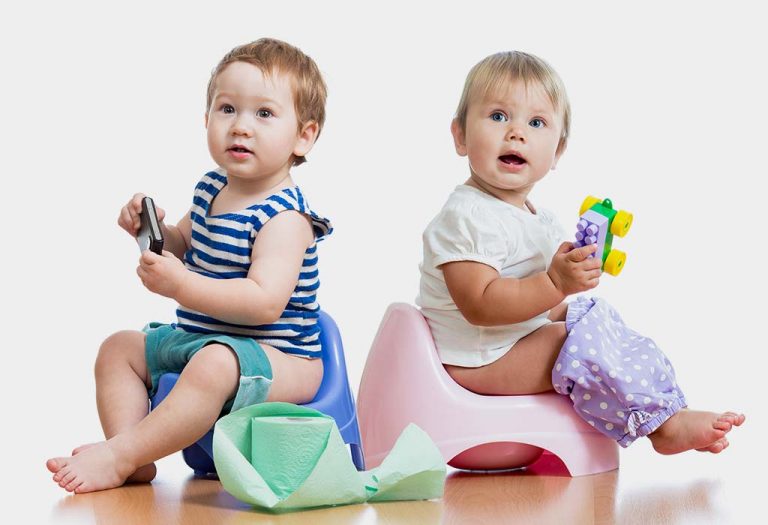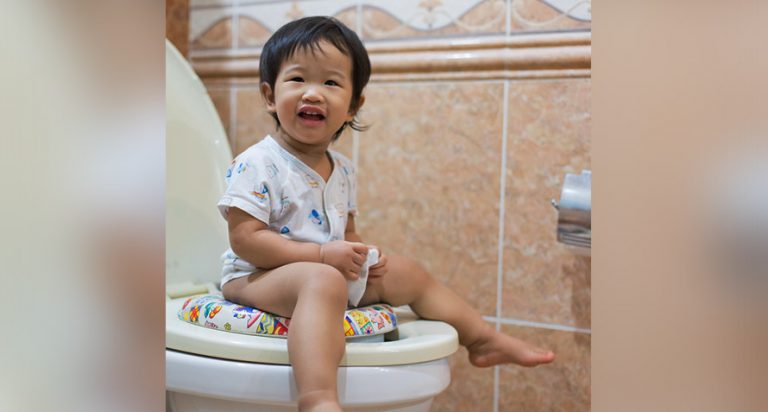Potty Training Methods – Choose the Best One for Your Child
You could have reached the end of your patience spectrum after spending on diapers. Your child is about to start an activity or school that requires them to be mandatorily potty trained. Once you begin, you will realise that there are a lot of specifics that you are unaware of.
Unfortunately, potty training is not as simple as directing your child to the toilet and getting them to use it. As you speak to peers or start your own research, you will start feeling overwhelmed with the difference of opinions and approach to styles of training. So, how do you decide what works best for you? Well, we cannot say what potty training techniques will work and what will not, but we could list the pros, cons and steps involved in a few of the most popular potty training methods.
What Is Potty Training?
Potty training is the process of teaching young children to use the toilet for urination and bowel movements instead of relying on diapers (1). It involves introducing the child to a potty chair or toilet, encouraging them to recognise bodily signals, and gradually helping them develop the skills to use the toilet independently. Successful potty training typically requires patience, consistency, and positive reinforcement from caregivers.
Which Are the Best Toilet Training Methods for Children
If you are ready as a parent to start potty training your child, the next stage is to consider which style is best suited for you and your child. There is no bespoke method that will guarantee results and every method to potty train comes with its fair share of advantages and disadvantages. There are different potty training methods. Listed below are a few and we have elaborated the advantages, disadvantages, process involved and who it is suitable for.
1. Child-oriented Potty Training
Introduced by T Berry Brazelton, a paediatrician, this is the most successful potty training method for toddlers and takes into consideration the readiness of the child to train (2). Parents who are happy to wait for their children to be ready to cooperate will highly benefit from this method.
Suitable For:
Suitable for 2-3 years of age, preferably 3 years when the child can tell you when they want to use the toilet or go to the bathroom.
Pros
- Does not require a parent to put their entire focus on this task or set aside dedicated time for it.
- Instigated by the child, this method involves less resistance and regression.
Cons
- Not a plan which yields quick results.
- Parents may have to continue paying for diapers for long, unlike other potty training methods.
Process
- Parents must talk about using the toilet with their children and encourage them to use it.
- No extensive efforts must be made to push the child towards it.
- Parents should continue to talk to the child and keep a watch on the child’s natural interests to develop and encourage the child to act on their own instincts.
- Parents can also use themselves as models and get children to mimic them.
- Parents let kids take the lead in making their trips to the bathroom and continue using diapers or pull-up training pants until a child goes to the toilet before wetting or soiling their diapers.
2. Training Pants
A shopping milestone- a mother will always cherish buying her kid’s first pair of underpants. Training pants are slightly padded to absorb the liquid in case of any accidents and is one of the best methods to potty train a boy.
Suitable For:
It will be suitable for kids aged 4 and above who are not yet potty trained. 4-year-olds are a little wiser, communicate and understand better.
Pros
- When a child wees or poos, the child will understand the sensation and how it feels to be wet or soiled.
- The child will be more inclined to use the toilet.
Cons
- Be ready for soiled areas- carpets, rugs, mats, floors will probably be covered in wee and poo.
- Resist the temptation to scold the child and tell them that if they want to use the toilet you can take them.
Process
- Get rid of the diapers and get your child to wear the training pants.
- Take them to the toilet at regular intervals to see if they want to use the toilet.
- Make sure you take them to the toilet after they have wet or soiled their pants so that they know what the feeling is like.
3. Three-Day Potty Training
Psychologists Nathan Azrin and Richard Foxx rooted for this train-in-days method and research suggest that this is also equally successful.
Suitable For:
It is suited for parents who wish to potty train their children quickly. It works best when a child is about 22 months old.
Pros
- A quick training plan, it is best suited for parents who wish to send their children to playgroup, school or activity.
Cons
- Takes away a significant amount of time from the family as the focus is entirely on potty training the child.
- This method also has plenty of window for accidents as it is a fast-paced method.
Process
- All diapers are thrown out on Day 1. Children are dressed in a big T-shirt and big size underwear. ( Make sure you have a large stock of underwear).
- Encourage the child to have lots of liquids to start peeing.
- Show the child the toilet and where they need to go if they need to pee.
- Accidents are inevitable and parents must make sure they pick the child up halfway through the incident and get them to finish in the toilet.
- This process must continue until parents are able to achieve success. Parents must stay calm, encourage children at every step and ensure that accidents are used as an example to teach the child.
4. Elimination Communication
One of the early potty training methods for girls and boys, Elimination Communication or Infant led method is very popular among families in Asia and Africa (3).
Suitable For:
It is generally begun when the child is months of age and finished by the time the child is able to walk.
Pros
- Less expenditure on nappies.
- Babies suffer fewer rashes because of soiled or wet nappies.
- Parents feel more attached to their children.
Cons
- Involves a substantial amount of time to train and wholly depends on catching cues from kids all the time.
- It will not work if carers, caretakers or nannies change frequently.
Process
- Disposable diapers are completely avoided and cloth nappies are used for the night. This helps the child to realise that they have wet themselves.
- Parents rely on timing, patterns, gestures, sounds or just intuition to take their child to the toilet. The moment parents receive a signal they rush the child to the bathroom to relieve themselves.
5. Parent-led Potty Training
Organized toilet training techniques, this method will appeal to you if you love schedules.
Suitable For:
It is ideal for parents who like to stick to a schedule and when a child has multiple caregivers. It can be started whenever the child is ready.
Pros
- Ideal for different people looking after the child to follow the schedule.
- There is no need to change the schedule or earmark days to focus solely on potty training.
Cons
- As the visits to the toilet are not initiated by the child themselves, they may not learn to recognise the bodily signs of nature’s calls.
Process
- Parents could develop their own schedule for the child to visit the toilet. It could vary as per the family’s convenience.
- Parents could also encourage times when the child expresses interest to visit the toilet by themselves.
6. Wait-and-Pee/Wait-and-Poop
This method is simply following the scheduled clockwork approach with a little more precision.
Suitable For:
Ideal for children who are still on a nappy and need to be trained ( but there is some more time for them to be completely independent).
Pros
- Fewer chances of accidents as your child is still on nappies.
- You child will learn the instinct slowly and gradually when a pattern emerges slowly.
Cons
- Children may not always cooperate to sit on the pot.
- With nappies still on, the child may not learn to understand their natural instincts.
Process
- With your child in pull-up diapers, get them to sit on the pot after waking up, before a nap, before meals and before bedtime.
- There may be chances that the pot is empty. Flush it still for the child to know what follows next.
7. Potty Planner
A slow and steady approach, this method follows the child’s lead and takes into consideration the readiness of the child to train.
Suitable For:
It is suited for those children who need to be prepped before any task or training.
Pros
- Training is easy if your child is ready.
- A casual approach, some kids could be quick learners.
Cons
- This method could take a while if the kid is not ready.
Process
- Set up a potty seat in the bathroom or living room. The idea is to get the child to get used to the idea of sitting at a different place to empty their bladder or bowels.
- Gradually introduce the idea by reading potty training books or watching videos
- For the first few days, the child may sit on the pot and do nothing. But with continuous effort, you will achieve the end result.
- Once the child has gotten used to peeing or pooing in the small pot, you can make the next step of sitting on the toilet seat.
8. Eyes on the Prize
This method relies on rewards to entice your little one.
Suitable For:
Works well for children who love to work towards a goal or earn a reward for something they have done well.
Pros
- Low-stress approach as there is no pressure to learn quickly.
Cons
- There may be a demand after every successful trip to the toilet. It may take some time to wean off.
Process
- Stock on things that your toddler or little one loves.
- A reward chart ( at the bathroom door) might also help to track the progress and they can see their achievement as they work along.
9. Bare-Bottom
One of the effective potty training methods for girls, it catches on really quick.
Suitable For:
Ideal for girls and boys over 2.5 years of age.
Pros
- Inexpensive as you do not need to spend on diapers.
Cons
- Not good for parents who do not like their kids to remain naked for a long time.
Process
- A great method for summers, let your child roam naked and encourage them to drink a lot of water.
- Like the underwear, once the wee or poo rolls down their leg, your child will discover their Eureka moment.
How to Choose the Best Potty Training Methods
Every child is unique, so selecting an approach that aligns with their temperament and your family’s routine is key. Here are some tips to help you decide on the right toilet training methods (4):
1. Assess Your Child’s Readiness
Look for signs that your child is ready, such as showing interest in the toilet, staying dry for longer periods, or being able to follow simple instructions. Starting too early can lead to frustration, so timing is important.
2. Consider Your Child’s Personality
Some children respond well to structured methods like the “three-day potty training” approach, while others may need a more gradual, child-led process. Tailor the method to your child’s comfort level and pace.
3. Choose a Method That Fits Your Lifestyle
Evaluate your family’s schedule and choose a method that works for you. For example, if you have a busy routine, a slower, more flexible approach might be better than an intensive, time-consuming one. Consistency and patience are essential for success.
Tips Before You Begin Potty Training
Before starting potty training, preparation and a positive mindset can set the stage for success. Here are some tips to help you get started. Every child is different, so finding the best potty training techniques that work for your little one can make the process easier and less stressful. (5):
- Look for cues like staying dry for longer periods, showing interest in the toilet, or being able to communicate their needs. Starting when your child is ready makes the process easier.
- Have a potty chair or toilet seat adapter, training pants, and easy-to-remove clothing on hand. Let your child pick out their potty chair to build excitement.
- Use encouraging language and avoid pressure or punishment. Celebrate small successes to keep your child motivated and confident.
FAQs
1. Can potty training cause constipation?
Yes, some children may hold in bowel movements during potty training due to fear or discomfort. To prevent constipation, ensure your child stays hydrated, eats fibre-rich foods, and avoids pressuring them. If the issue persists, consult a paediatrician.
2. How do I handle potty training while travelling?
When travelling, bring a portable potty seat or disposable seat covers for public restrooms. Stick to your routine as much as possible, and keep extra clothes and cleaning supplies handy for accidents.
3. Can siblings or pets influence potty training?
Yes, siblings or even pets can play a role! Younger children often learn by observing older siblings, so involving them in the process can be helpful. Some parents even use pets to demonstrate bathroom habits, though this is more about making the process fun and relatable.
4. Should I worry if my child pretends to use the potty with toys?
Not at all! Pretend play, like having dolls or stuffed animals “use the potty,” is a positive sign. It shows your child is processing the concept and can make them more comfortable with the idea of using the toilet themselves.
Most children potty train between the age of 18-24 months. Some, however, are not ready until the age of 3. The average age for potty training is said to be 27 months. Potty training must not be a punitive process and reprimanding a child is not an ideal solution. Stay calm and encourage your child to visit the toilet to learn how to use it as a natural process.
References/Resources:
1. Stanford Medicine – Toilet Training
2. National Library of Medicine – Toilet learning: Anticipatory guidance with a child-oriented approach
4. American Academy of Pediatrics – Toilet Training: Which Method is Best?
5. Nemours Kids Health – Toilet Training
Also Read:
Games for Potty Training a Toddler
Potty Training Clothes for Toddlers
Potty Training Chart to Train Your Child
Innovative Ideas to Potty Train Kids Quickly
Was This Article Helpful?
Parenting is a huge responsibility, for you as a caregiver, but also for us as a parenting content platform. We understand that and take our responsibility of creating credible content seriously. FirstCry Parenting articles are written and published only after extensive research using factually sound references to deliver quality content that is accurate, validated by experts, and completely reliable. To understand how we go about creating content that is credible, read our editorial policy here.





